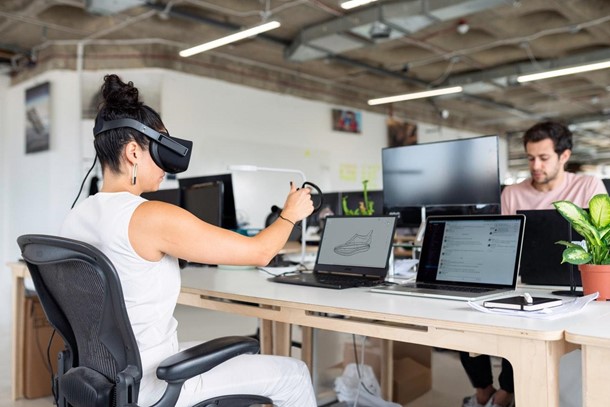Among the many new and exciting opportunities that our digital landscape has to offer, 3D printing has some of the most fascinating. Yet, it’s often discussed primarily from the perspective of hobbyists and do-it-yourself (DIY) enthusiasts. While this can provide more people with the chance to create items without relying on large corporations, small home production is far from the only application for additive manufacturing.
The rise of 3D printing has been instrumental in helping to drive manufacturing industries forward in ways that are relevant to the current climate. Our contemporary commercial environment faces challenges, not the least of which are the irreversible effects of climate change and an uncertain economic future. The continued development, acceptance, and exploration of this technology helps to address these issues and provide new avenues for use.
We’re going to take a look at 3D printing and its impact on innovation and job creation. Where are the current trends for use, and what elements are rife for creative exploration and viable career paths?
Sustainable Practices
We live in a time in which environmentally conscious actions are pushing to the top of the agenda. There is certainly an imperative to halt processes that are damaging — whether actively or passively — to our planet and the lives of those who live on it. Industry is a key contributor to global greenhouse gas emissions, among other forms of waste disposal and energy consumption. As such all sectors that pollute, manufacturing and construction among them, have a responsibility to embrace innovations that mitigate the negative impact. 3D printing has become vital here.
From a purely waste management perspective, 3D printing is more efficient than other forms of manufacturing. Traditional forms of production tend to cut or sculpt smaller objects or components from larger pieces of raw materials. This results in a significant amount of discarded scrap which then has to be disposed of. Additive manufacturing on the other hand builds products on a layer-by-layer basis, the result being that there is significantly less wasted raw material, particularly when the item is designed for maximum process efficiency by computer-aided design (CAD) experts. There is potential for further global waste reduction by companies who are using recycled plastics as 3D printing material.
Moving forward, among the ways that 3D printing can have an impact on sustainability is in the construction industry. This sector not only produces a lot of waste, but also tends to involve a vast supply chain — manufacturing, logistics, shipping, and building — each of which uses resources and produces emissions. On-site additive manufacturing construction is already being trialed, printing entire homes from concrete that is specially formulated to be compatible with extruders and robust enough for long-term use. This can not only make homes more sustainable to build, but also more affordable for buyers.
Competitive Landscape
Additive manufacturing doesn’t just make production more sustainable. It also helps to spur the kind of creativity that leads to innovation. New tools are ripe for exploration, and the more accessible these tools are, the greater the potential for advancement — as we’re seeing in the development of smart homes. As 3D printing is becoming more affordable, it is resulting in a diverse and highly competitive commercial landscape.
This is probably most evident in the sheer range of industries that additive manufacturing connects with. Aside from the aforementioned construction industry, some of the most competitive venues for the technology are found in the automotive and aerospace sectors, with engineers from both seeking to design lightweight and high-performance components, and even print entire vehicles at lower costs and greater efficiency. Even the healthcare sector is pushing 3D printing to provide not only cheap sterile instruments, but also skin grafts, replacement organs, and prosthetics.
One of the most important roles that 3D printing is playing in encouraging a competitive commercial environment, is ensuring that it is open to more entrepreneurs. Industries such as healthcare, manufacturing, and aerospace would have at one time in the not-so-distant past been inaccessible to some small business owners. Yet, 3D printing opens the field to almost anybody with a little capital and some knowledge. Ricky Sorlanzo, co-founder of bioengineering company Allevi, built his first bioprinter in his dorm room. This kind of innovation pushes companies and other industry players to produce their best work and maintain advancement.
Varied Careers
One of the ways 3D printing is likely to have a rising impact is job growth. There is often the concern that the introduction of new technology might result in the removal of jobs. However, as is so often the case, the opposite is true. Additive manufacturing has already started to result in specialized technical positions, and there is also potential for greater crossover into other industries in the future.
Among the most prevalent roles in 3D printing are the design positions. Those who are well-versed in CAD applications are already in demand in manufacturing industries, and as they are integral to take 3D printed projects from ideation to creation they are likely to continue to be so in the future. However, there is also demand for additive printing in architecture and research and development positions where cheap but accurate model making and prototyping are essential.
It’s also important to note that skills in 3D printing are also in demand in green careers. Those who are interested in pursuing job paths that have a positive environmental impact will find that 3D printing is likely to be a key tool in helping them find solutions to the varied climate change challenges we face. Civil engineers are often tasked with creating infrastructure plans for communities and municipalities. In the creation of these plans, they can use additive printing to create 3D plans for designing efficient city infrastructure. Environmental scientists and geoscientists are using additive manufacturing to model smaller-scale experiments and produce apparatus for the field.
Conclusion
3D printing has become a familiar aspect of our technological landscape. The more accessible it becomes, the greater opportunities there are to impact sustainability and build a competitive economic environment. Alongside the innovations additive manufacturing brings, there is potential for a wide range of careers that are growing each year.
This article is brought to you by Solid Signal. Get everything you need to live your best digital life when you shop at SolidSignal.com.





